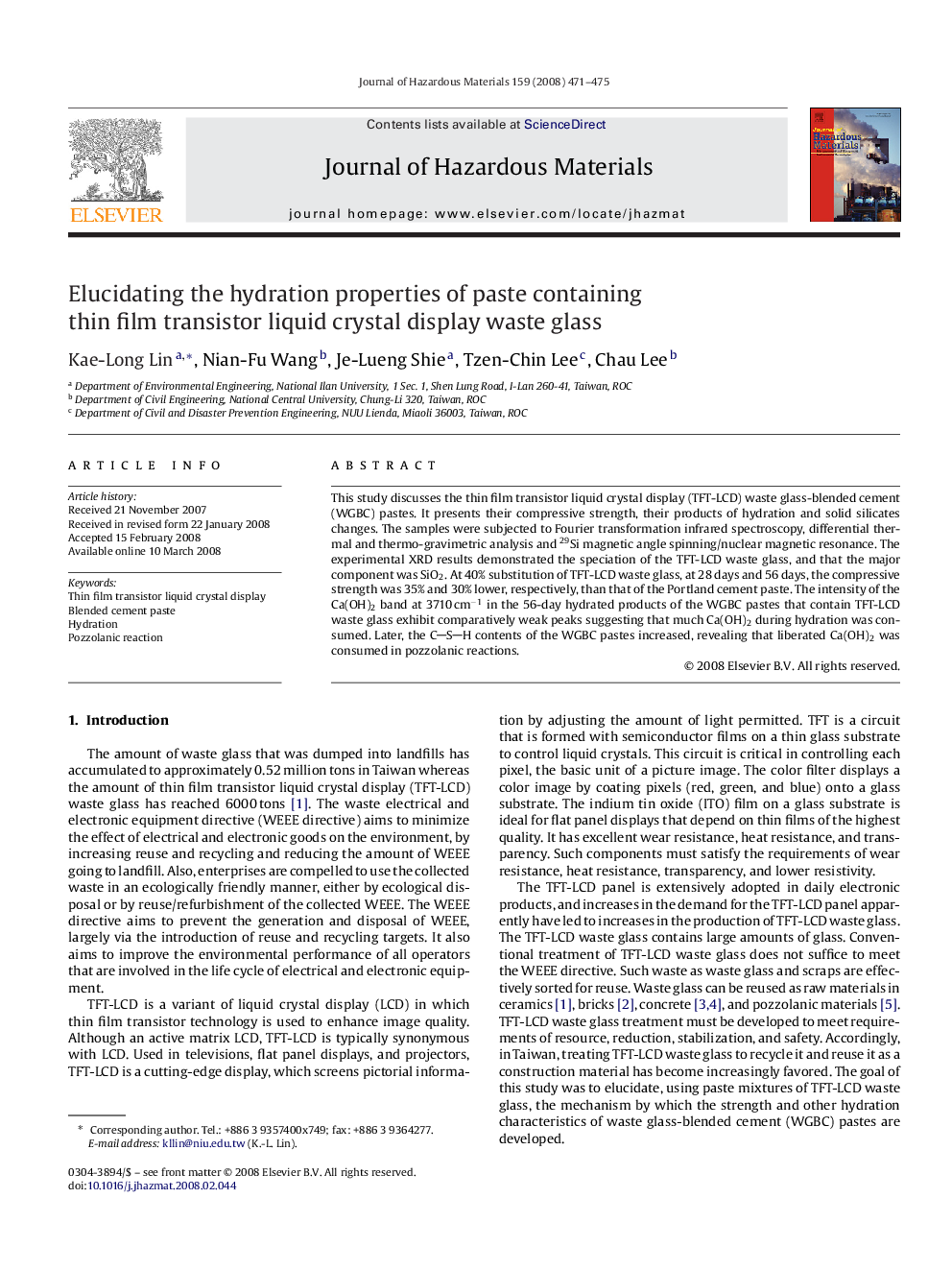| Article ID | Journal | Published Year | Pages | File Type |
|---|---|---|---|---|
| 582992 | Journal of Hazardous Materials | 2008 | 5 Pages |
Abstract
This study discusses the thin film transistor liquid crystal display (TFT-LCD) waste glass-blended cement (WGBC) pastes. It presents their compressive strength, their products of hydration and solid silicates changes. The samples were subjected to Fourier transformation infrared spectroscopy, differential thermal and thermo-gravimetric analysis and 29Si magnetic angle spinning/nuclear magnetic resonance. The experimental XRD results demonstrated the speciation of the TFT-LCD waste glass, and that the major component was SiO2. At 40% substitution of TFT-LCD waste glass, at 28 days and 56 days, the compressive strength was 35% and 30% lower, respectively, than that of the Portland cement paste. The intensity of the Ca(OH)2 band at 3710Â cmâ1 in the 56-day hydrated products of the WGBC pastes that contain TFT-LCD waste glass exhibit comparatively weak peaks suggesting that much Ca(OH)2 during hydration was consumed. Later, the CSH contents of the WGBC pastes increased, revealing that liberated Ca(OH)2 was consumed in pozzolanic reactions.
Keywords
Related Topics
Physical Sciences and Engineering
Chemical Engineering
Chemical Health and Safety
Authors
Kae-Long Lin, Nian-Fu Wang, Je-Lueng Shie, Tzen-Chin Lee, Chau Lee,
